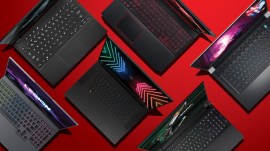Alienware M18 R2 review: mothership-scale power and proportions
14th gen Intel internals keep this gaming great in contention
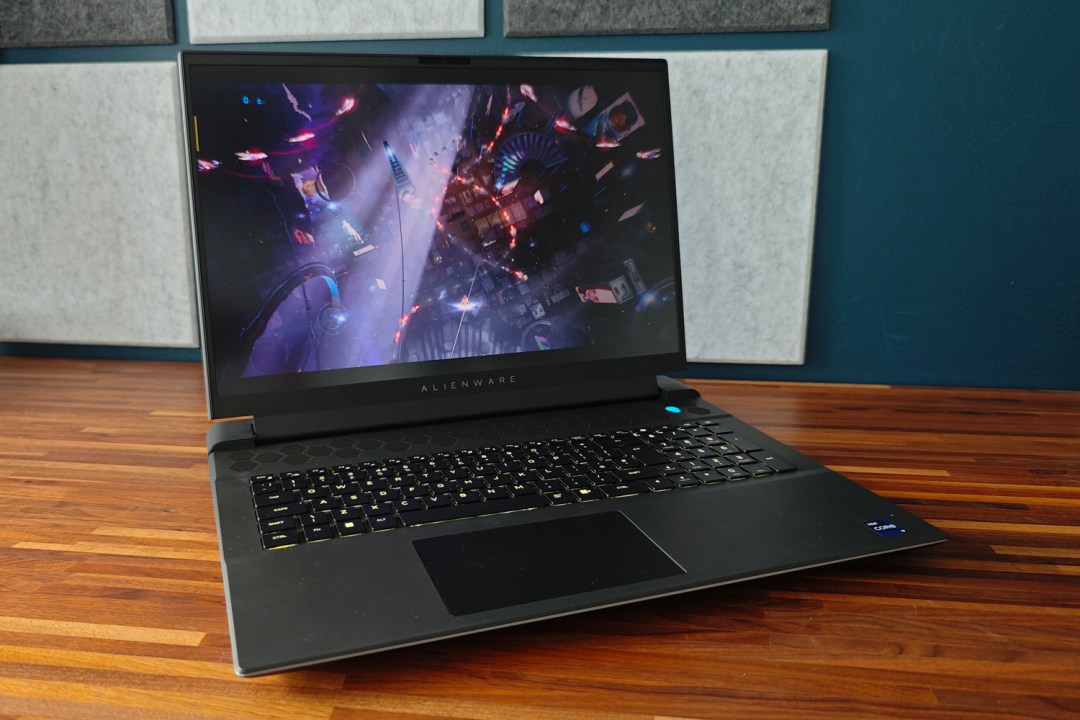
Stuff Verdict
This luggable laptop gives gaming desktop PCs a run for their money. The Alienware M18 R2 doesn’t have the best screen going, but excels on connectivity and can be configured to suit many budgets
Pros
- Gaming performance is interstellar
- More ports than you’ll know what to do with
- Can be configured to suit a range of budgets
Cons
- Screen is far from class-leading
- Toasty under load, with loud fans
- Very modest battery life
Introduction
Alienware went all-in on 16 and 18in screens for its gaming laptops in 2023, before Intel had dropped its 14th-gen Core mobile CPUs – so you can’t blame Dell’s gaming arm for taking the mid-life refresh route, rather than completely overhaul its desktop replacement for a second time in as many years. And given how well received the Alienware M18 was, this R2 variant shouldn’t have to work too hard to impress.
This laptop isn’t out to claim the outright performance crown, with an entry-level, $1900/£1849 spec that sounds oddly sensible for a brand obsessed with little grey spacemen. Tick a few options boxes and things get much more otherworldly, with the version tested here setting you back $3300/£3500, complete with RTX 4090 graphics and Core i9 processor. Underpowered this ain’t.
However much money you throw at it, though, you’re still limited to an IPS screen. With rivals now making the jump to mini-LED, has the M18 R2 done enough to justify the update?
How we test laptops
Every laptop reviewed on Stuff is tested using industry standard benchmarks and apps to assess performance and battery life. We use our years of experience to judge display, sound and general usability. Manufacturers have no visibility on reviews before they appear online, and we never accept payment to feature products.
Find out more about how we test and rate products.
Design & build: made for mission control

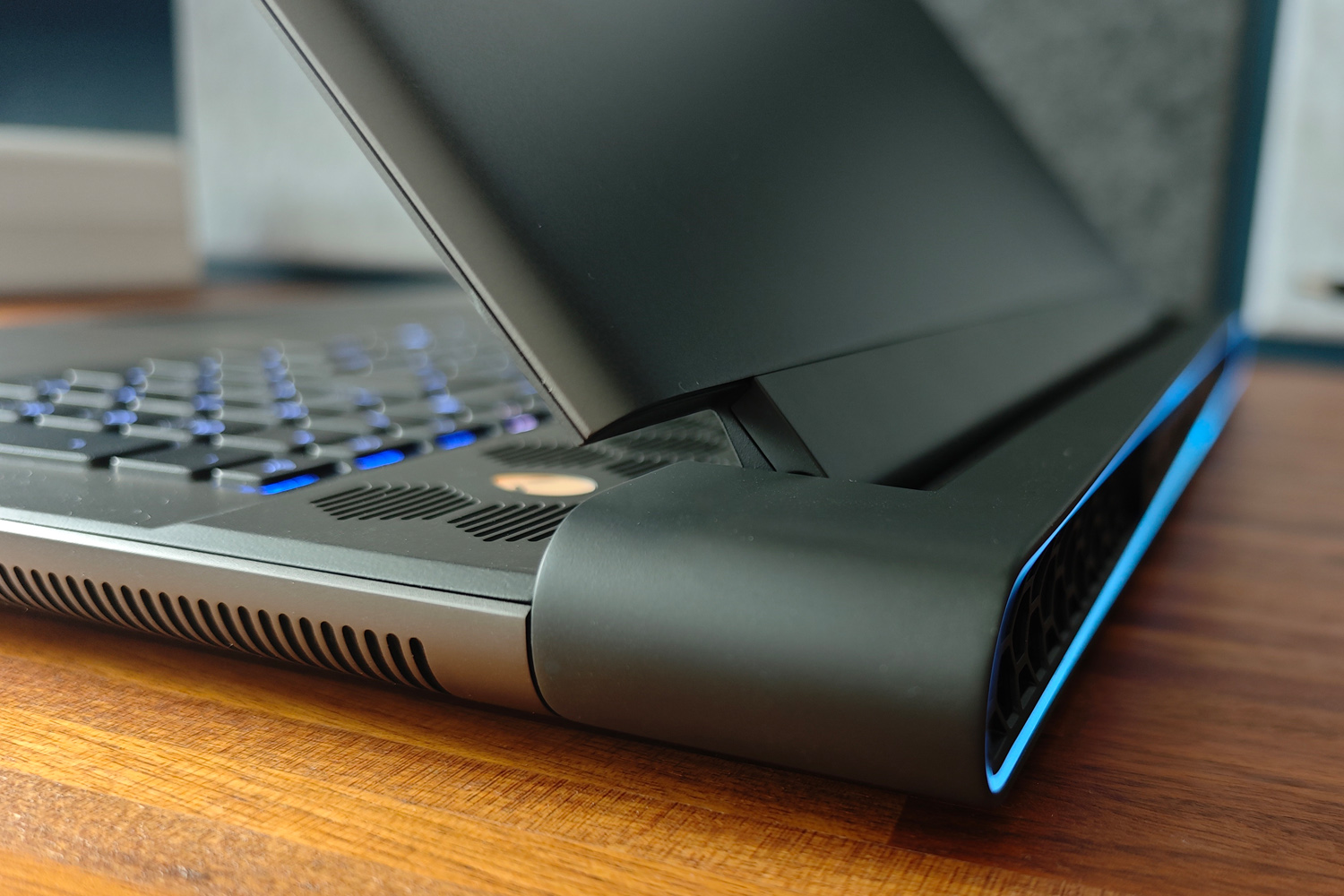
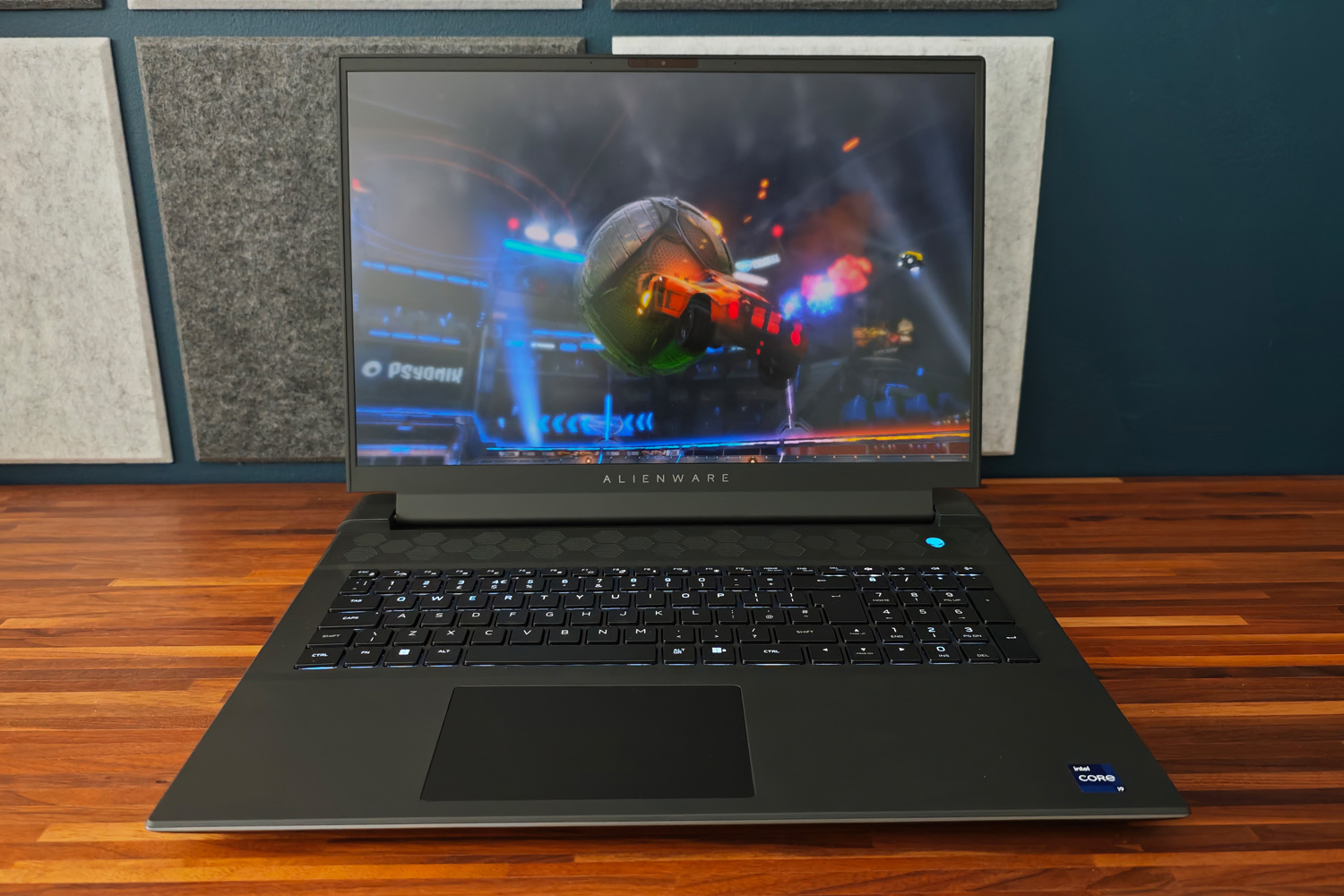
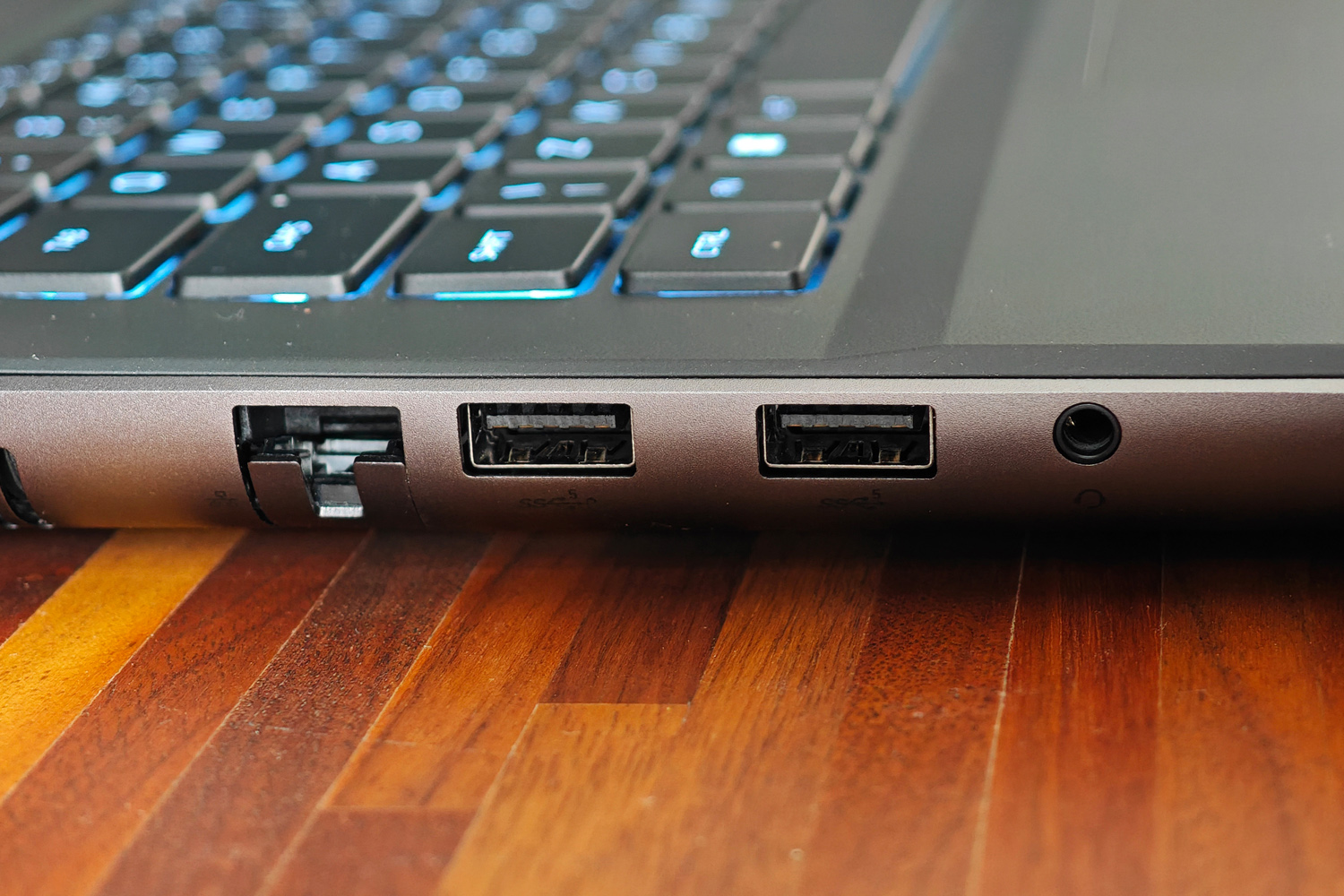
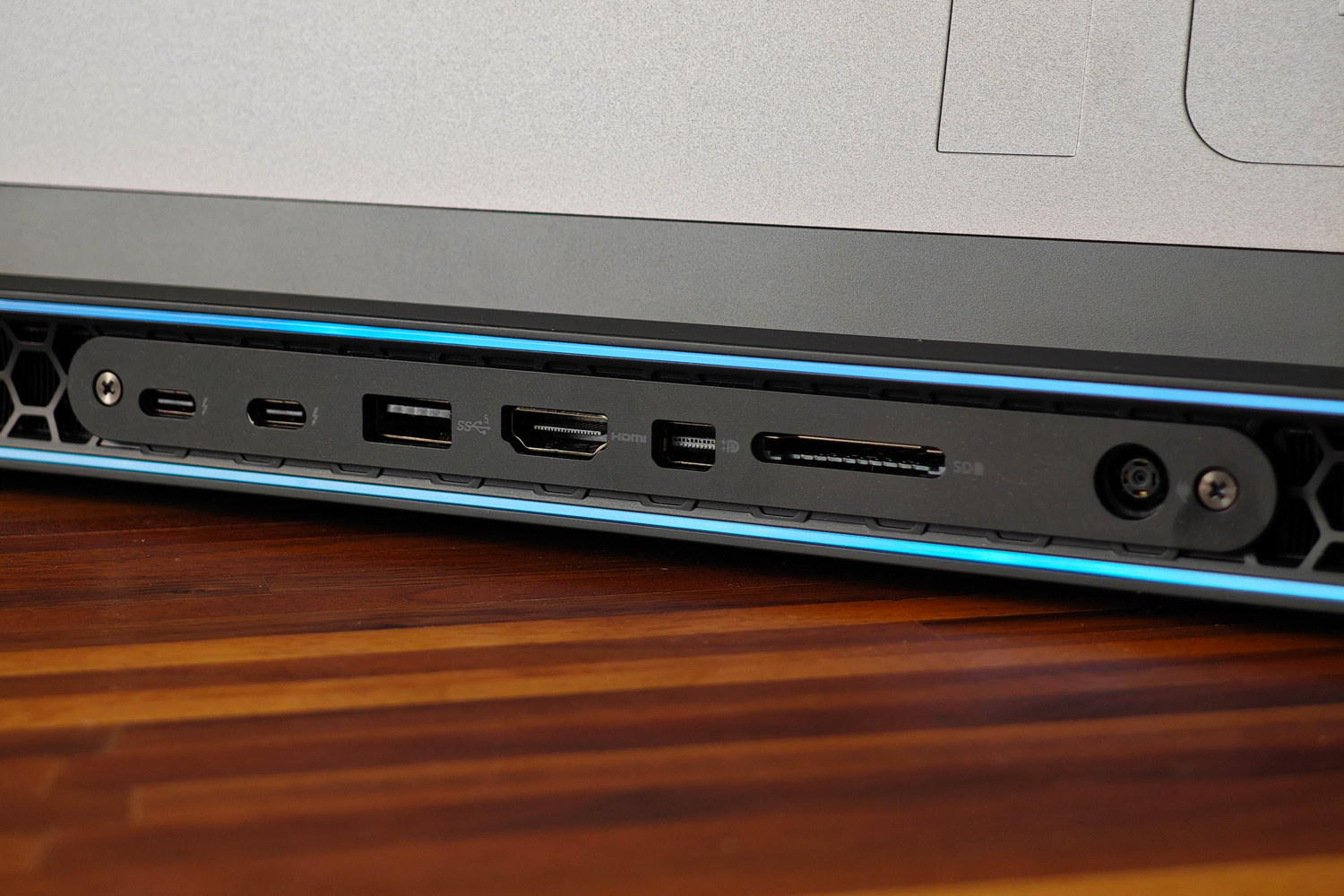
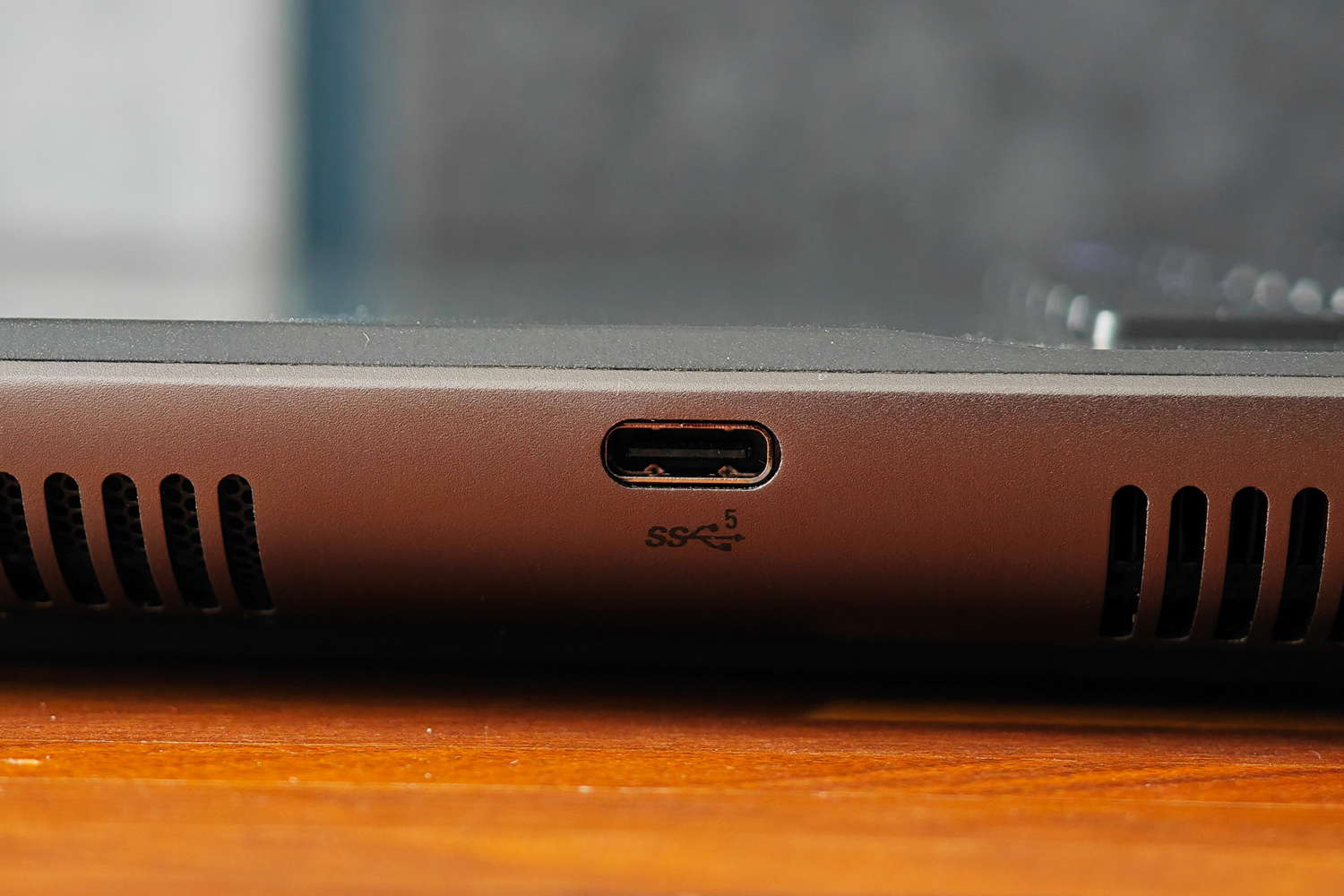
Compared to Alienware’s older, more ostentatious efforts the M18 R2 looks awfully restrained – but there are still some telltale signs this machine means business. A light-up alien head logo and stylised ’18’ graphic embossed on the anodised aluminium lid for one; the RGB-illuminated ‘thermal shelf’ at the rear, the other.
This is where you’ll find the bulk of the M18’s connections – twin Thunderbolt 4-ready USB-Cs, HDMI and mini DisplayPort video outputs, a single USB-A, and a proprietary power port – which helps keep cable management clean. There’s also an SD card reader here, but it was fiddly to reach when copying photos off my digital camera. Moving it to the left side instead of the Ethernet port would’ve made more sense, if the motherboard layout allowed for it.
You also get another USB-C, two USB-As and a 3.5mm combo jack on the left side, with one final USB-C on the right. It’s a sensible arrangement that keeps most cables far away from your gaming mouse. Almost all the remaining space is used for cooling ventilation, with the majority blown out the rear. One fan does vent out towards your mouse hand, though, which can get toasty after even a brief gaming session.
A fingerprint reader would’ve been nice, but a Windows Hello-ready 1080p webcam is the next best thing.
Tapered edges disguise this laptop’s dimensions, but there’s no ignoring it when you pick the thing up; at 3.9kg you won’t want to be lugging it around with you on the daily. And that’s before you factor in the sizeable power brick. It also takes up a considerable amount of desk space – but what else did you expect from an 18in laptop?
There’s no faulting the build quality, with minimal chassis flex and a sturdy screen hinge that doesn’t wobble. I also like how well the Dark Metallic Moon colour – a matte gunmetal grey – hides fingerprint smudges.
Keyboard & touchpad: stick or click

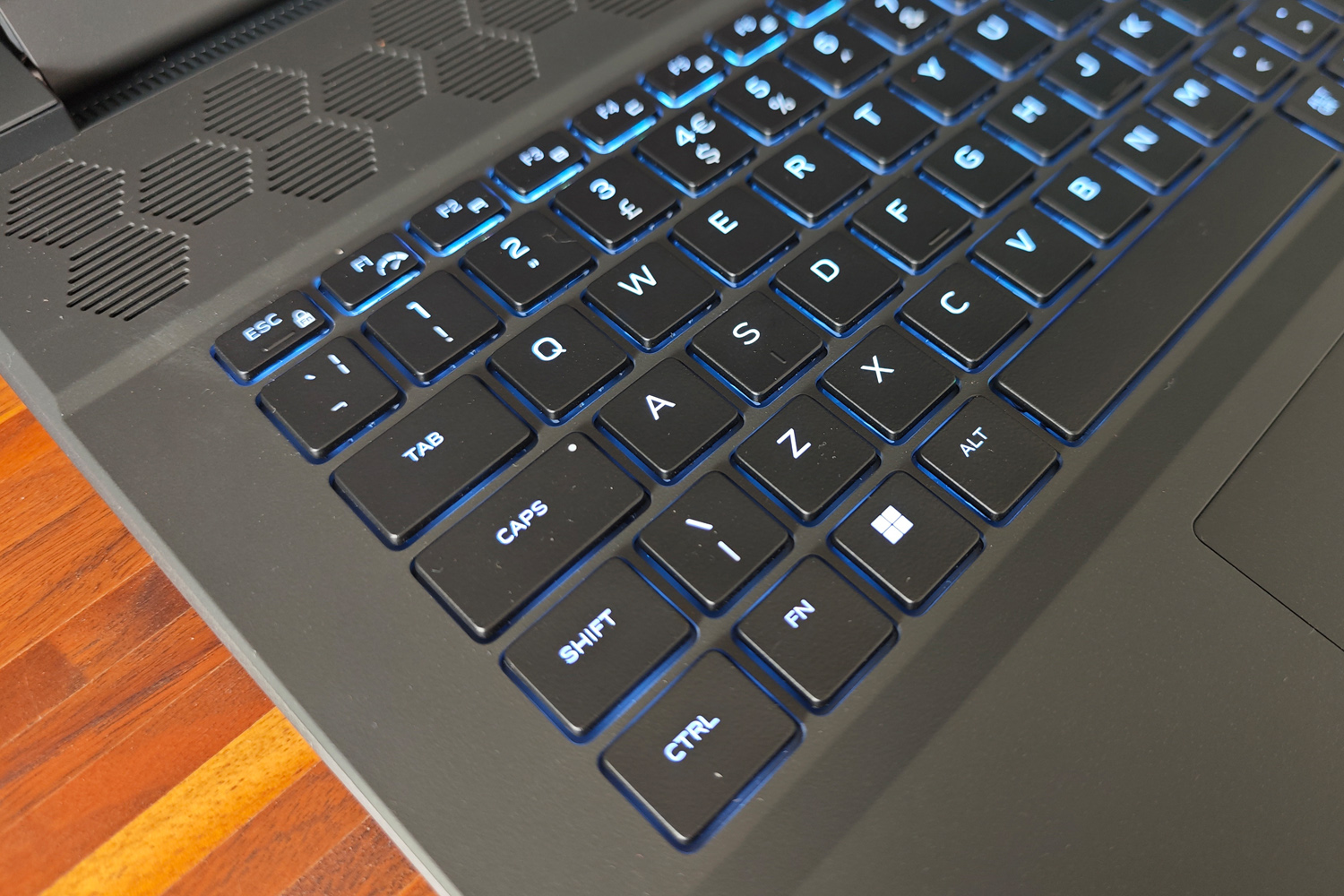
With space hardly at a premium, the Alienware M18 R2 gets both a full-size QWERTY keyboard and number pad. The laptop uses regular scissor-style keys that I found comfortable for typing, with a decent amount of travel and reasonable tactile feedback, plus just the tiniest bit of key wobble. The per-key RGB backlighting is easily customised through Alienware’s Command Centre software. Coverage is pretty even and the lights get bright enough to see during daylight hours.
If you don’t mind splashing an extra $50/£50, you can upgrade the M18 R2 to Cherry MX low-profile mechanical key switches, complete with Copilot key for waking Microsoft’s AI assistant. My review unit didn’t have it, so I can’t truly say whether it’s worth the additional outlay, but having tried similar switches on other laptops in the past, I don’t think I’d hesitate to tick that particular options box.
The touchpad wasn’t quite as smooth or friction-free as some I’ve used lately, and isn’t exactly huge either. Still, it doesn’t get in the way when using the WASD keys for gaming, and is sensitive enough to span the huge screen in a single swipe. You’re still going to want a proper mouse for gaming, though.
Screen & sound: size isn’t everything
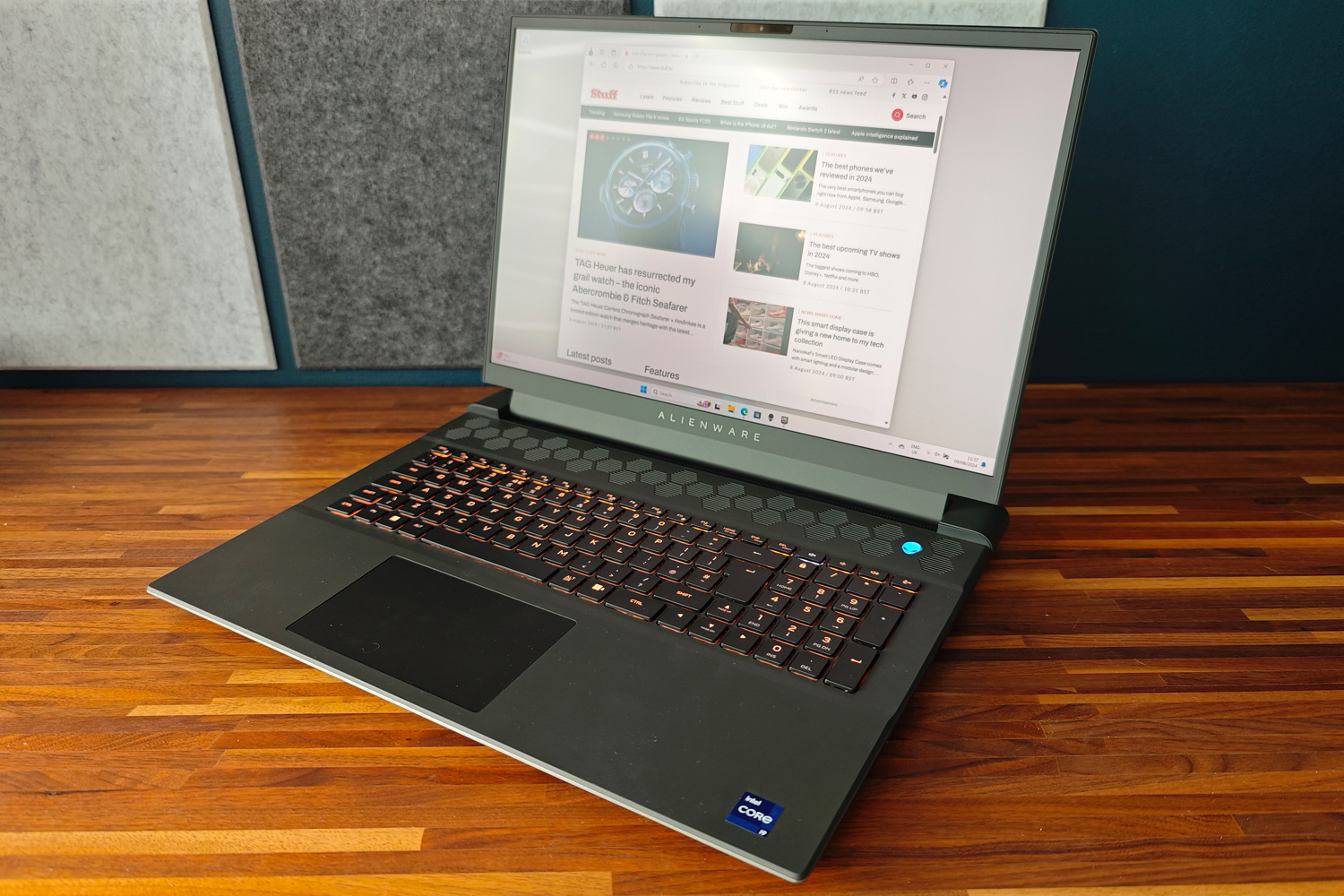
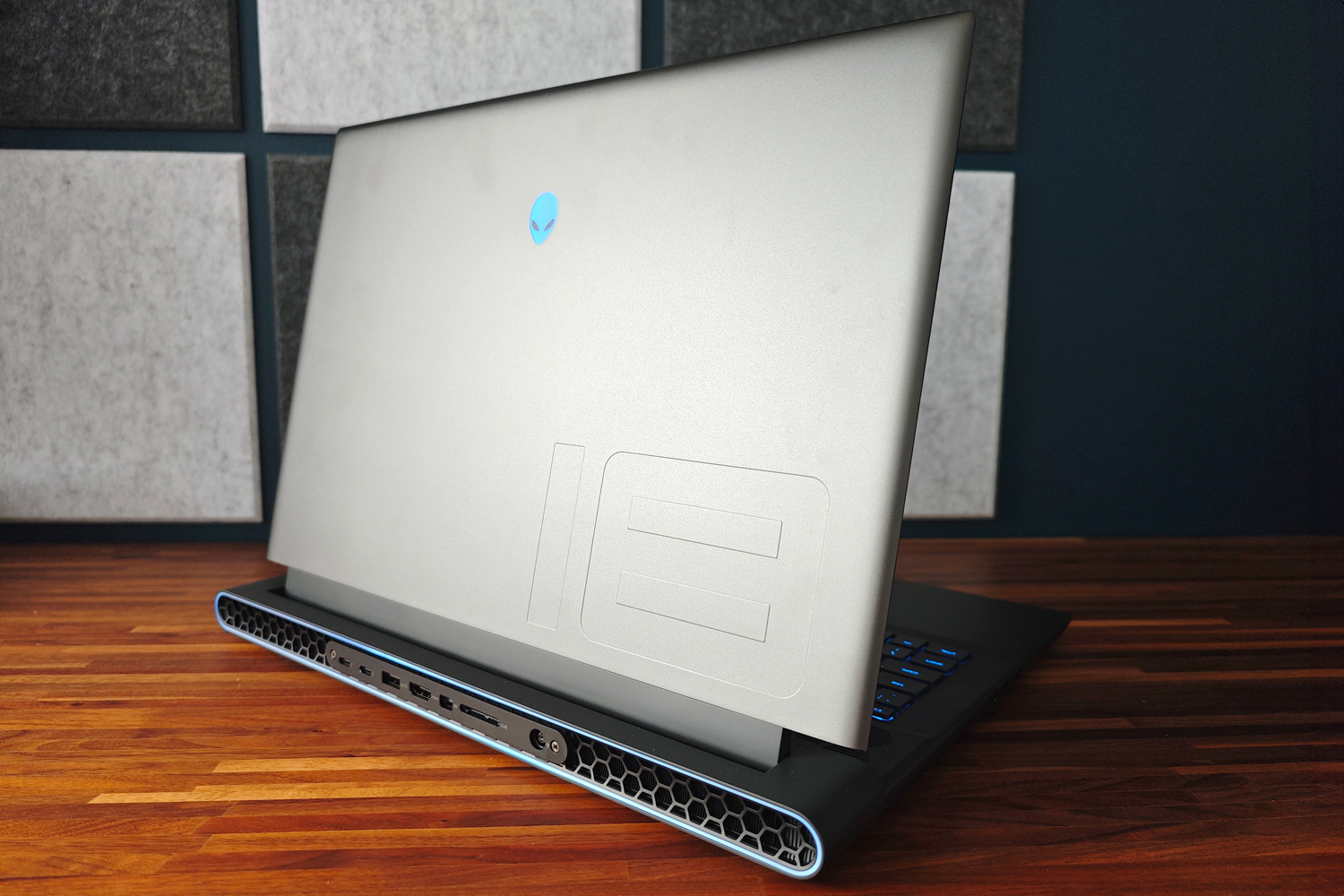

The Alienware M18 R2’s display options depend on where you live. US shoppers can option a Full HD display with rapid 480Hz refresh rate, or a QHD, 165Hz screen; other territories (including mine) only get the latter. Both versions have Nvidia G-sync, but don’t support HDR content, and use IPS LCD panels.
IPS tech feels behind the times compared to mini-LED (which I’ve seen on a few big screen laptops now) and OLED (which currently tops out at 16in for gaming laptops). The M18 simply can’t compete on contrast, and it doesn’t get super bright either. A peak 300 nits is below the class average, though an anti-glare panel coating does help cut out light reflections. I didn’t have to draw the blinds to get any work done, only when playing particularly dark games.
The 2560×1600 resolution looks reasonably sharp stretched across 18in, at least from a typical viewing distance. I also think it’s a sensible choice for laptop gaming. The RTX 4090 can manage playable frame rates at 4K in a lot of titles, but ray tracing can still cause it grief when pushing that many pixels; here I was able to crank pretty much every game to the highest settings and get close to – or exceed – the 165Hz refresh rate.
Viewing angles are merely OK, so you’ve really got to sit directly in front of the screen to avoid washed out colours. Colour accuracy isn’t all that great either, with a slightly warm tone and very saturated hues. Things improve after calibration, but it’s still a long way off the pop and impact of the best gaming laptop screens. That’ll be a blow if you’re just getting into PC gaming, but if the Alienware M18 R2 is replacing an ageing desktop rig, you’ll probably be plugging it straight into an external monitor anyway, so shouldn’t see the screen as a dealbreaker.
The side-firing speakers are clear and loud enough for kicking back with a movie or streaming show, or casual gaming. Even for a laptop there’s not much in the way of bass, but don’t distort when you max out the volume slider. I still reached for my headphones before launching any competitive games, though.
Performance: pick your power level
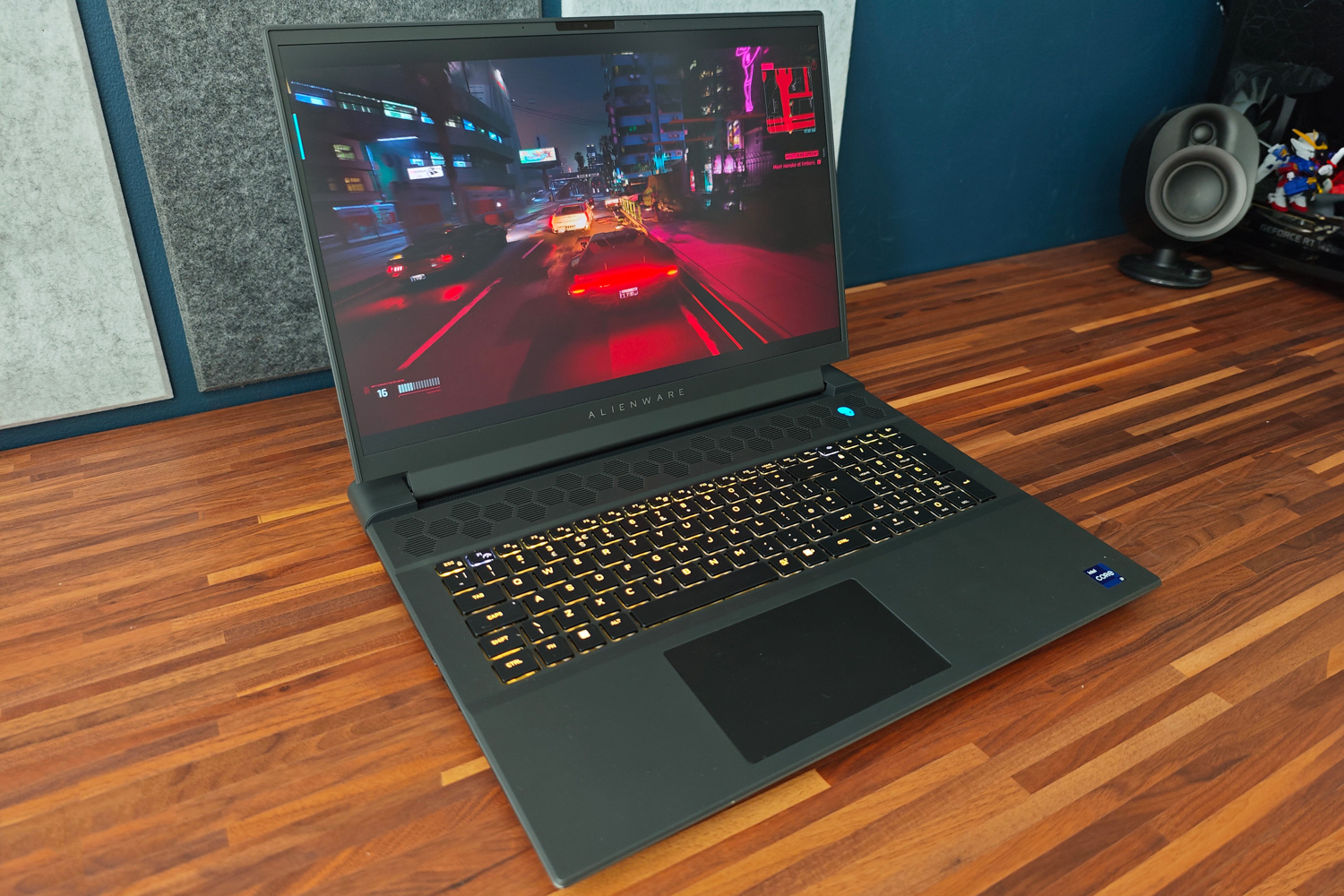
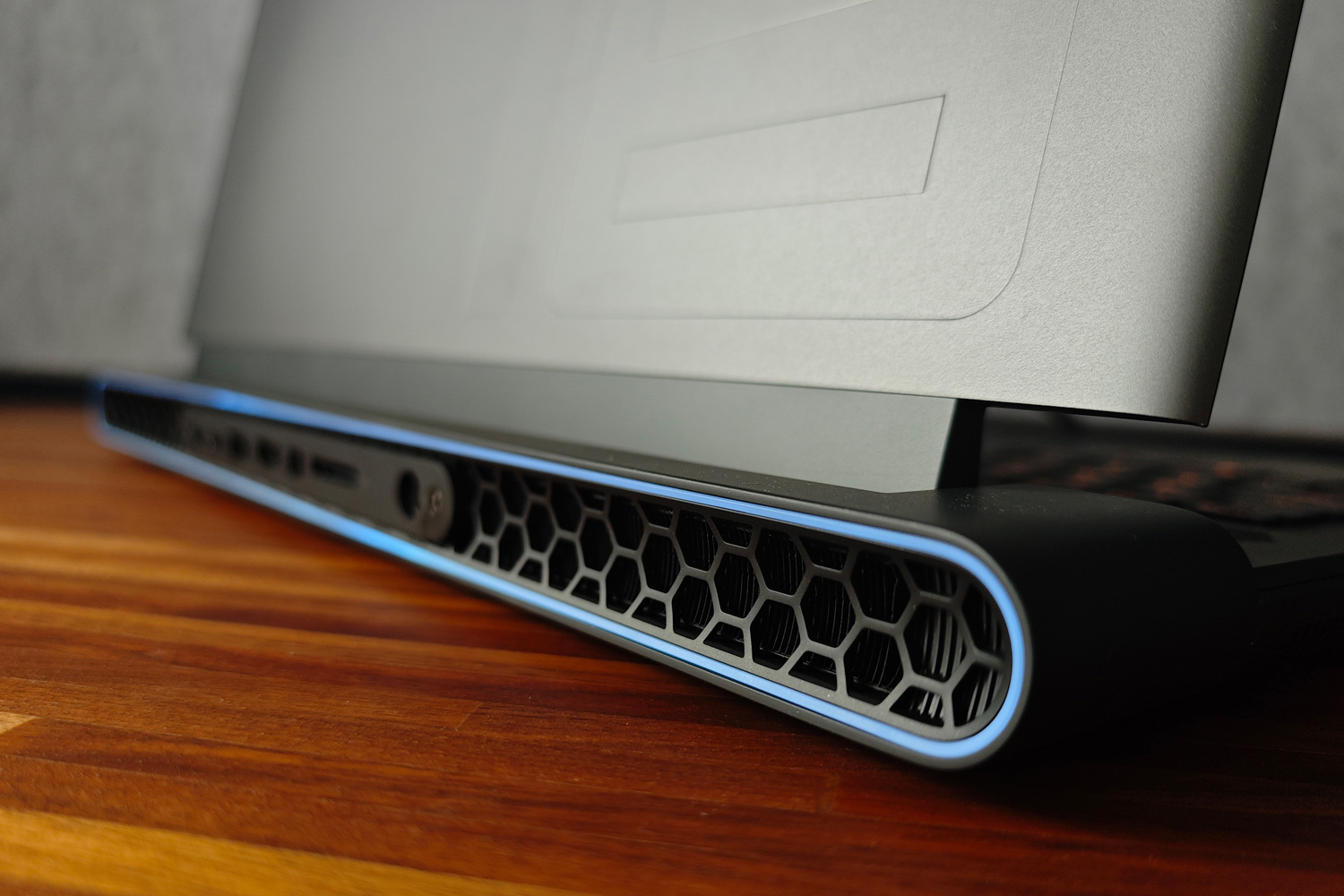
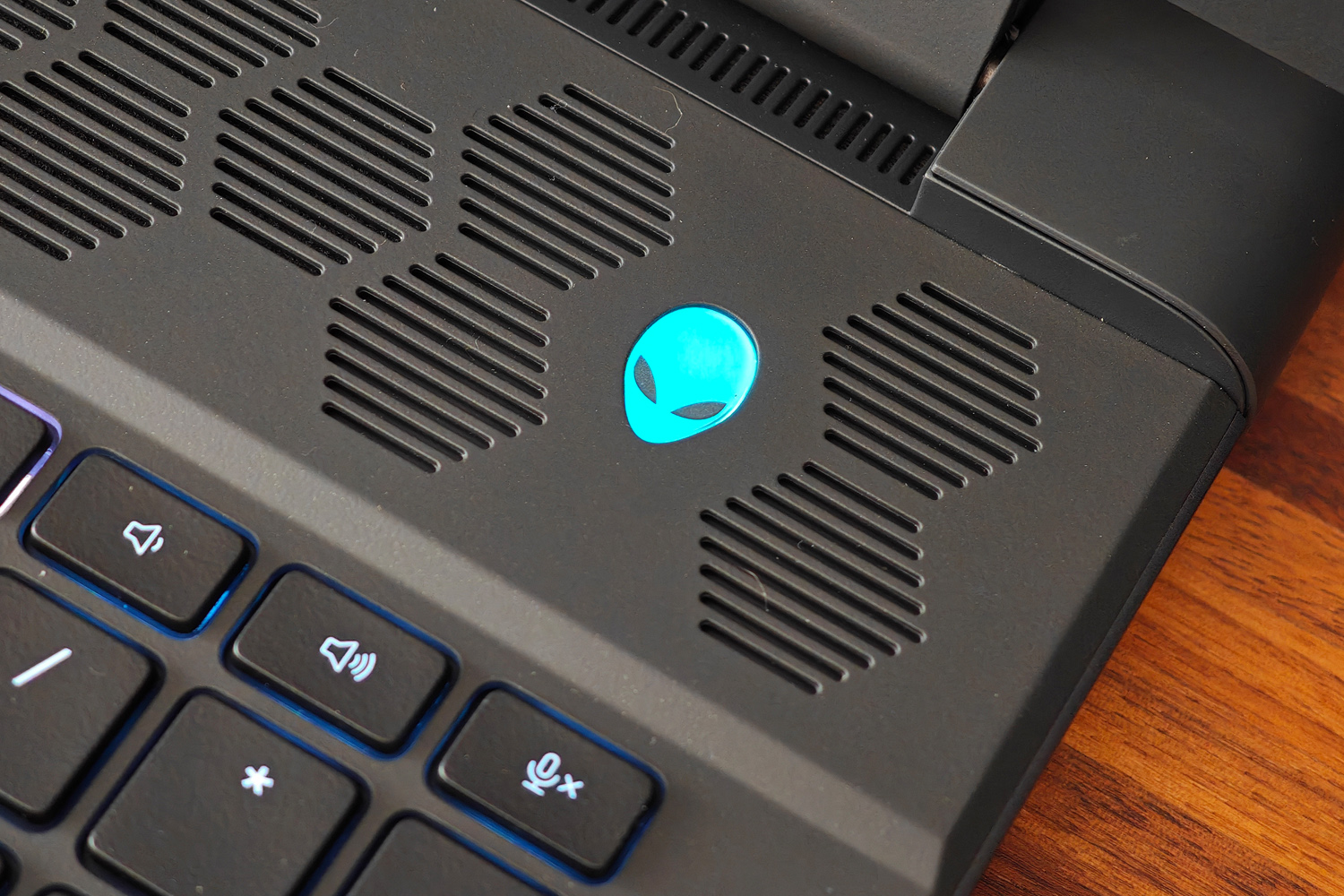
An entry-level Alienware M18 R2 has an Intel Core i7-14650HX CPU, 16GB of RAM, a 1TB SSD and Nvidia RTX 4060 graphics. My review unit lands more towards the top end of the scale, with a Core i9-14900HX processor, 32GB RAM, 2TB SSD and RTX 4090 GPU. If you’ve got unlimited funds, you can step up further with 64GB of RAM and a whopping 8TB of RAID 0 SSD storage.
Whatever spec you go for, you’re getting liquid metal thermal compound on both the CPU and graphics core, plus a revised vapor chamber cooling system from the original M18. That makes this latest Alienware very effective at taming temperatures, with no performance dip after an hour of sustained benchmarking. And while the four internal fans do get very noisy, they don’t spin at an irritating pitch. With headphones on you simply won’t notice them.
Any 18in laptop needs to be able to rub shoulders with desktop PCs on performance, and the Alienware duly delivers. The 24-core Intel CPU demolishes 2D benchmarks, scoring 9710 in Cinebench R20 to put it ahead of any gaming laptop reviewed here at Stuff this year. A 4K video encode using Handbrake saw similar results, besting the Asus ROG Zephyrus G16 and its more mobile-focused Intel Core Ultra 9 185H. Only thicker 18in rivals with even more cooling stand a chance of besting it in a drag race. That said, the gap between it and models using older 13th-gen Intel CPUs isn’t colossal.
Gaming is a given, with the RTX 4090 GPU handed 175W of the laptop’s total 270W power budget. At the laptop’s native 2560×1600 resolution, Call of Duty Modern Warfare III averaged an impressive 155fps fully maxed, while Grand Theft Auto 5 nudged 130fps. Expect triple digits in just about every recent title – Diablo VI, Shadow of the Tomb Raider, Tiny Tina’s Wonderlands – unless it involved ray tracing. I stuck to 1080p for Cyberpunk 2077, but Nvidia’s DLSS upscaling tech ensured it comfortably stayed north of 60fps the entire time.
It’s only battery life where the Alienware M18 R2 falters. Even for a desktop replacement laptop, it won’t last long away from the mains. I saw between four and five hours of video playback at 50% brightness, and simply leaving the machine idle to download Xbox Game Pass titles saw it drained in less time than that. Attempt to game on the go and you’ll be lucky to see an hour of use. The 16in gaming laptops I’ve tried this year manage considerably longer for desktop duties, so may be a better choice if you need an all-purpose machine.
Alienware M18 R2 verdict

The M18 R2 is a desktop replacement in every sense of the world. In top spec guise it has the 2D and gaming performance to rival pre-build tower PCs, and there are enough ports here to plug in almost every peripheral you could name. Alienware’s styling is as on point as ever, and the base price isn’t too outlandish if you’re prepared to make some sacrifices. A merely OK screen isn’t so much of a dealbreaker if you play on an external monitor, too.
I can’t ignore that rivals such as the Acer Predator Helios 18 offer mini-LED panels for similar cash, though. The M18 R2 is also an especially heavy laptop, with pretty average battery life. There are more suitable options for gaming on the go, even if you demand a big screen.
Stuff Says…
This luggable laptop gives gaming desktop PCs a run for their money. The Alienware M18 R2 doesn’t have the best screen going, but excels on connectivity and can be configured to suit many budgets
Pros
Gaming performance is interstellar
More ports than you’ll know what to do with
Can be configured to suit a range of budgets
Cons
Screen is far from class-leading
Toasty under load, with loud fans
Very modest battery life
Alienware M18 R2 technical specifications
| Screen | 18in, 2560×1600, 165Hz IPS LCD |
| Processor | Intel Core i9 14900HX |
| Memory | 32GB RAM |
| Graphics | Nvidia GeForce RTX 4090 16GB |
| Storage | 2TB SSD |
| Operating system | Windows 11 |
| Connectivity | 2x Thunderbolt 4/USB-C, 1x USB-C, 2x USB A 3.2, HDMI 2.1, mini DisplayPort, 3.5mm combo audio, Ethernet, SD card reader |
| Battery | 97Whr |
| Dimensions | 410x320x26.7mm, 3.9kg |



